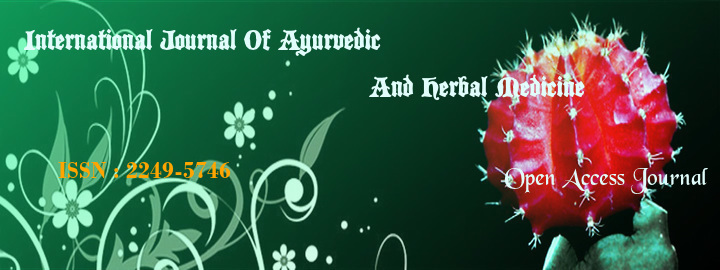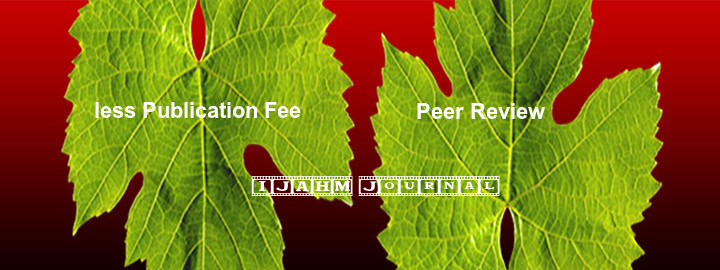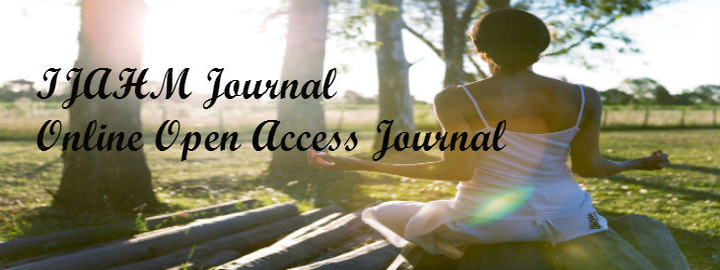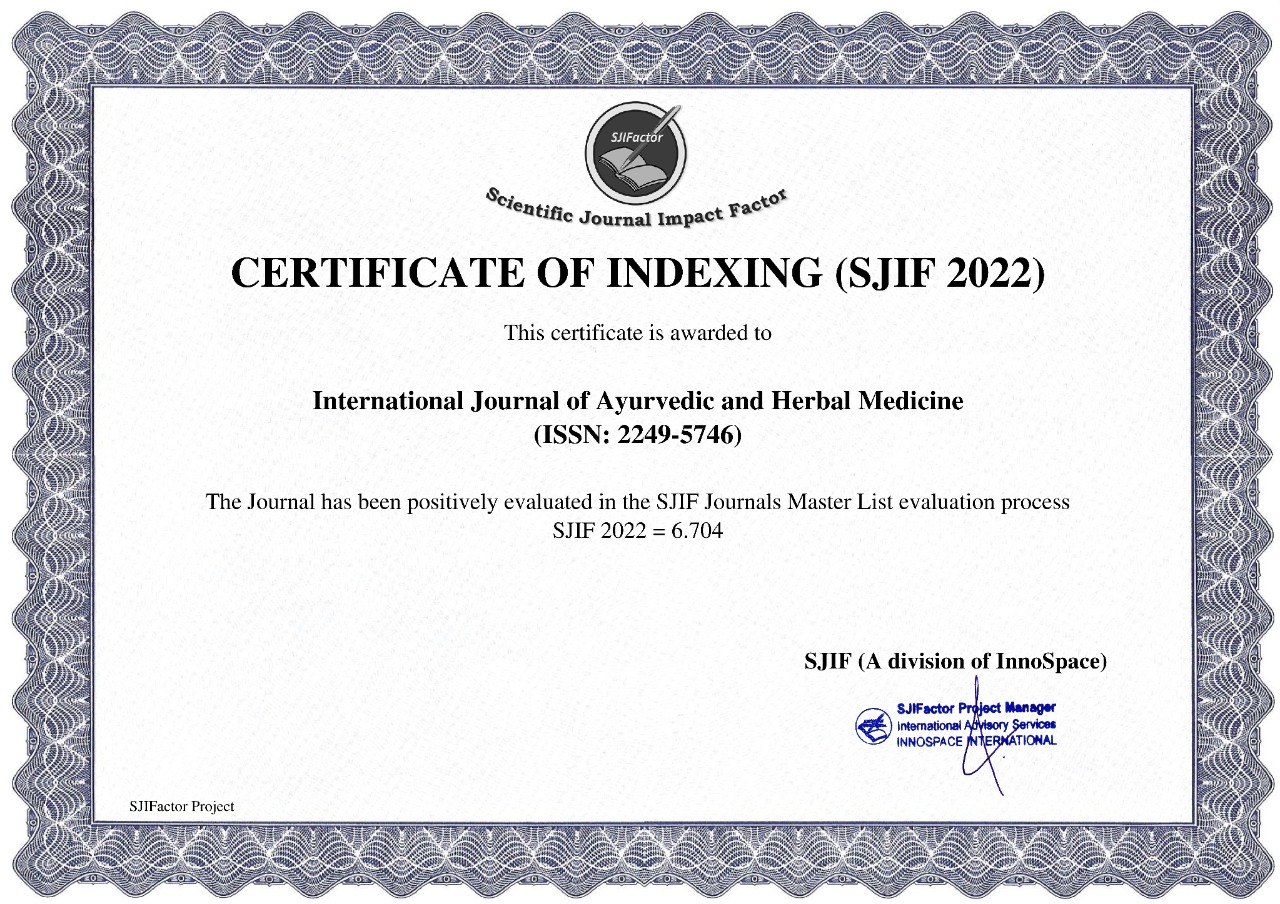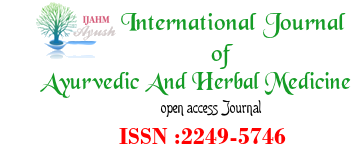


1Bharti ,2Sharma Subhash , 3Toor Raman , 4Sharma Manisha
DOI : http://dx.doi.org/10.31142/ijahm/v8i.4.04
1M.D. Ayu, Reader, Deptt. Of Kayachikitsa, G.N.A.M.C.,Gopalpur, Ludhiana(Pb.)
2M.D. Ayu, Lecturer, Deptt. Of Panchkarma, G.N.A.M.C.,Gopalpur, Ludhiana(Pb.)
3M.D. Ayu, Lecturer, Deptt. Of Agad Tantra, G.N.A.M.C.,Gopalpur, Ludhiana(Pb.)
4M.D. Ayu, Reader, Deptt. Of Rog Nidan, G.N.A.M.C., Gopalpur, Ludhiana(Pb.)
Abstact:-
Introduction: Anxiety Disorder is a Manasika Vikara mentioned in Ayurvedic literature which is a gift of today’s stresseful lifestyle. In Ayurvedic classics, Medhya drugs like Kushmanda are indicated to improve functions of Manas and Buddhi.
Aims and Objectives: The study was planned on albino rats to evaluate the anti anxiety effect of Kushmanda beeja Choorna.
Materials and Methods: Kushmanda Beej Choorna was administered to 20 rats divided into 2 groups containing 10 rats in each group. From day 1 to day 5, two groups were administered through intra gastric tube using 2 ml disposable syringe fitted with 18 gauze needle, with the estimated dose of distilled water and trial drug i.e. Beeja Choorna of Kushmanda respectively. On 6thday, one hour after the respective drug administration, effect was observed on the basis of animal model Elevated plus maze and few parameters were recorded.
Result: Dunnett’s post hoc test and student unpaired‘t’ test were applied to trial group in comparison with control group showed statistically highly significant result with p value < 0.001 in the number of entries to the open arm, statistically significant result with p 0.002 on the latency of first entry to the closed arm and moderately statistically significant with p 0.012 in time spent in open arms.
Conclusion: It was concluded that the trial formulation contains good anti anxiety properties so can be used in the management without any side effects.
Keywords: Anxiety, Ayurveda, Kushmanda
References –
1. Walf Alicia A, zfrye Cheryl A. The use of the elevated plus maze as an assay of anxiety-related behaviour in rodents.Nat.Protoc.2007;2(2):322-328 (https://www.ncbi.nlm.nih.gov/pmc/articles/PMC3623971/) CITED ON 23RD JUNE 2018
2. Chiba Andrea. Why we use rodents to research the brain. The San Diego Union-Tribune, copyright © 2018
3. Al-Snafi Ali Esmail. The Pharmacological Importance of Benincasa hispida. A review. International Journal of Pharma Sciences and Research, Vol.4 No 12 Dec.2013 P.165-170
4. Une Hemant Devidas, Doshi Gaurav. Chromatographic studies on Benincasa hispida seed extract scrutinized by HPLC and HPTLC. Pharmacognosy Journal, April 2014, 6(3):42-48.
5. Nadhiya K, Haripriya D, Vijayalakshmi K. Pharmacognostic and preliminary phytochemical analysis of Benincasa hispida Fruit.Asian Journal of Pharmaceutical and Clinical Research, Vol.7, issue 1, 2014, P.-98-101
6. Ambikar D.B, Mohanta G.P. Effect of Dried Fruit extract of Benincasa hispida on Brain behaviour in Laboratory Animals. Journal of Cell and Tissue Research. 2013, Vol.13 Issue 1, p 3519-3524
index







